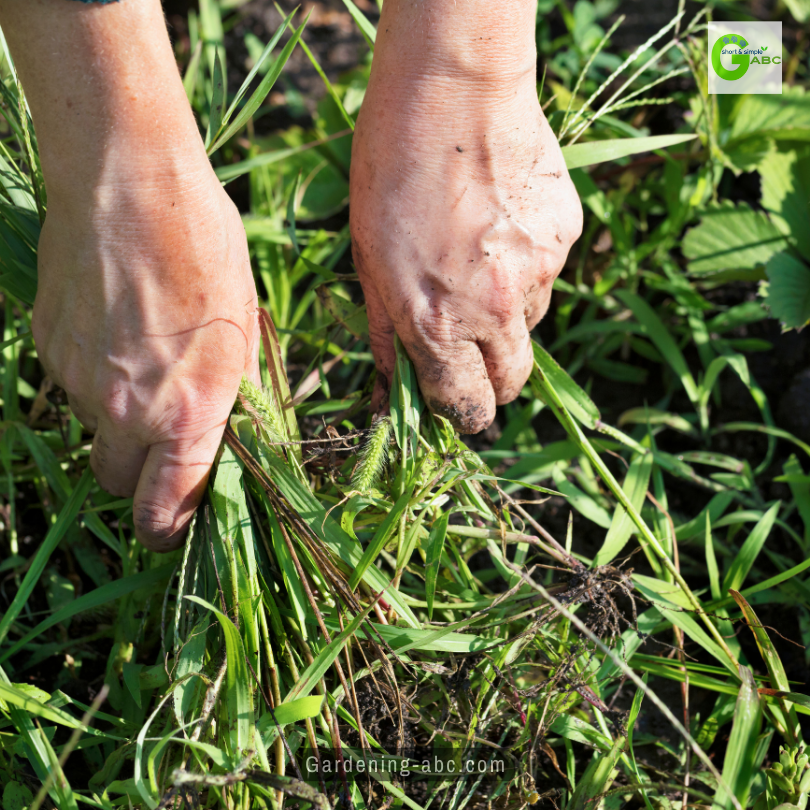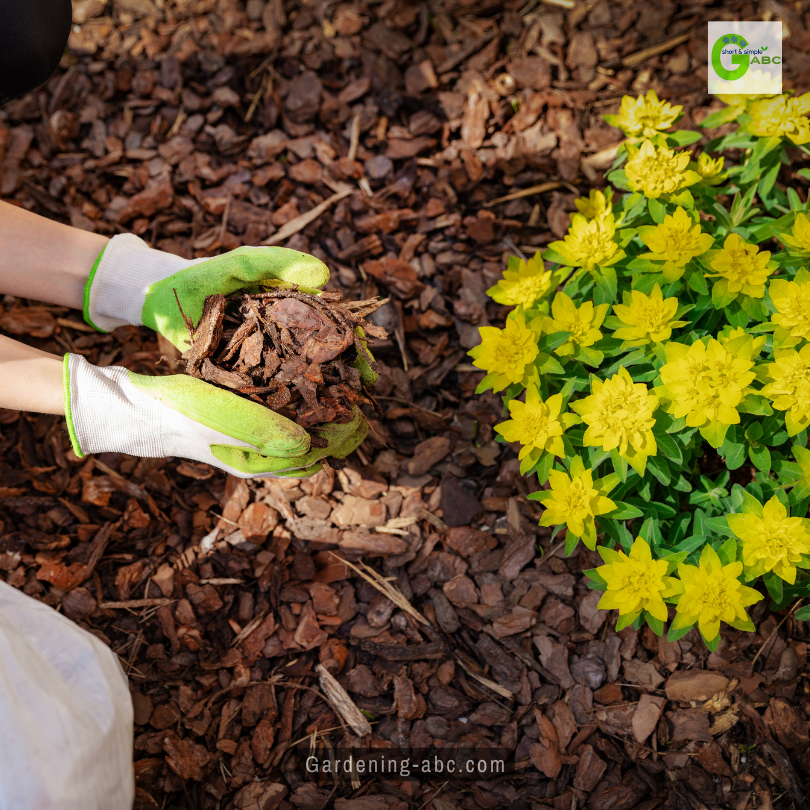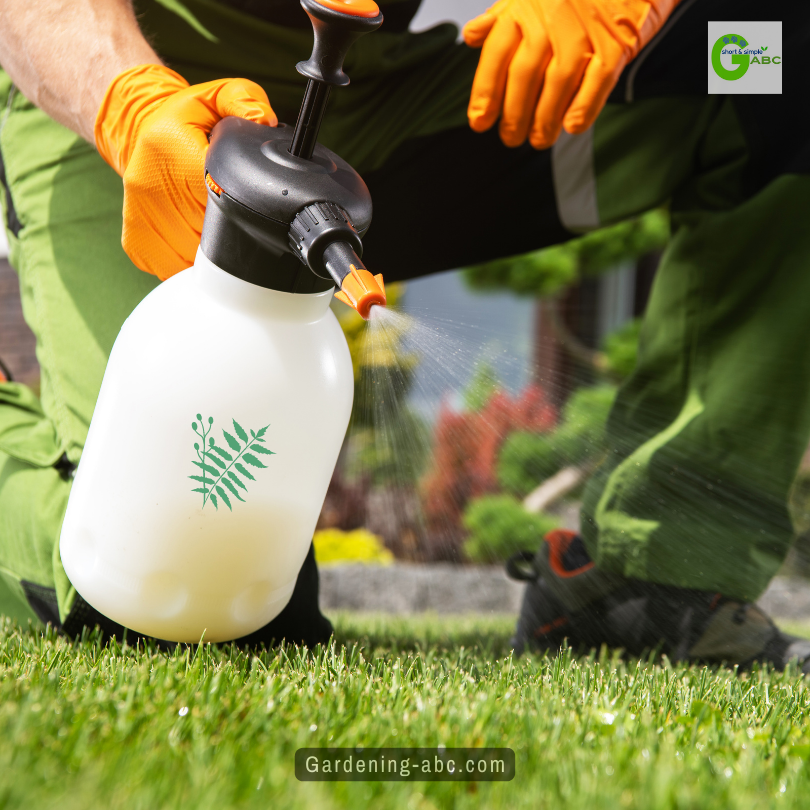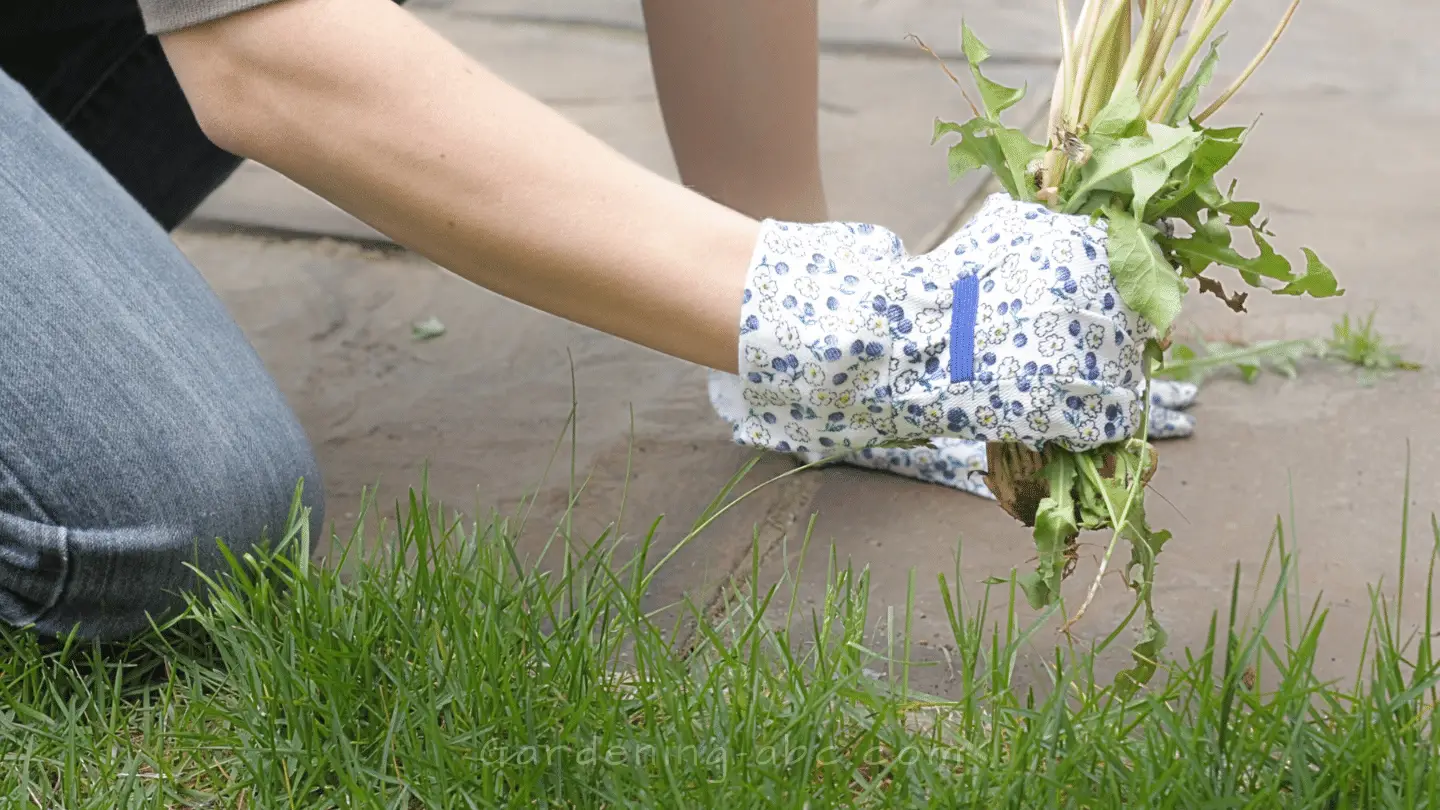We use affiliate links to run our site. When you buy through links on our site, we may earn an affiliate commission, without any added cost to you. Learn more
If you’ve ever spent time in a garden or enjoyed the great outdoors, chances are you’ve encountered sticker weeds at some point. These prickly plants can quickly become a nuisance.
Stickers, also known as grass burrs, burweed, or puncture vine, can turn your once serene lawn into a minefield of discomfort.
So, in this comprehensive guide, we will unveil the different types of stickers in the grass and reveal the best methods to banish them for good.
Get ready to reclaim your lawn and bid farewell to those prickly invaders!
What are Sticker Weeds?
Sticker weeds, commonly known as burrs or hitchhikers, refer to a group of plants that produce small, spiky structures designed to attach themselves to other objects.
These structures, often called burrs or stickers, serve as a means of dispersal for the plant’s seeds.
When they come into contact with animals, humans, or objects passing by, the burrs stick to their surfaces, effectively hitching a ride to new locations.
Types of Sticker Weeds:
Here are some different types of sticker weeds commonly found in the grass:
1. Yellow Vine Stickers: These seed pods are round, have four sharp points on them, and produce bright green leaves with slightly reddish edges.
2. Burweed: These annual plants produce small green leaves, yellow flowers, and large seed pods with three to five sharp pins.
3. Lawn Burs: Found specifically on lawns, these stickers have four pointed pins, light green leaves, and stems with white hairs.
4. Field Sandburs Sticker: These stickers have smaller seed pods, usually the size of an eraser, with pointy pins growing on them. They have green leaves and stems with fine hairs.
5. Burr Stickers: Brown in color, these stickers are longer than they are wide, with lots of spikes. They have light green to yellow leaves and a stem that turns brown when the plant is about to die.
6. Grass Stickers: Found in grass types grown for lawns or gardens, these stickers resemble small blades of grass with a pointy end. The leaves start green and turn brown as the plant ages.

Where Do Sticker Weeds Come From?
Sticker weeds can be found in various environments, from urban landscapes to rural fields and even natural wilderness areas. They have adapted to different climates and can thrive in diverse conditions, including moist areas, arid regions, and everything in between.
Some common examples of sticker weeds include burdock, cocklebur, bur marigold, and beggar’s ticks.
Why are Sticker Weeds so Persistent?
Sticker weeds have developed survival mechanisms that make them particularly persistent and challenging to eradicate. Their ability to produce numerous seeds, often in large quantities, ensures a higher chance of successful propagation.
Additionally, the spiky burrs enable these plants to attach themselves firmly to surfaces, increasing the likelihood of seed dispersal and colonization in new areas.
Furthermore, sticker weeds have adapted to outcompete other plants by thriving in disturbed soil or areas with minimal competition.
They are often opportunistic plants, quickly seizing available resources and growing rapidly, which contributes to their persistence.
How can we Effectively Deal with Sticker Weeds?
Dealing with sticker weeds requires a multi-faceted approach. Here are some strategies for tackling sticker weed problems:

- Prevention: Minimize the introduction of sticker weeds by regularly inspecting clothing, pets, and outdoor equipment for attached burrs. Be mindful when hiking or spending time in areas known for sticker weed infestations, and avoid spreading seeds unknowingly.
- Hand Removal: For small-scale infestations, manually removing sticker weeds can be effective. Wear protective gloves and carefully pull the plants from the ground, ensuring to remove the entire root system to prevent regrowth.
- Mowing and Trimming: Regular mowing or trimming can help control sticker weeds in lawns and open spaces. Be sure to collect and dispose of the clippings properly to avoid unintentional seed dispersal. A stirrup hoe can be a great tool for this.
- Mulching: Applying a thick layer of organic mulch, such as wood chips, straw, or leaves, around your plants and in your garden beds can help suppress sticker weed growth. Mulch blocks sunlight and prevents weed seeds from germinating. Make sure the mulch layer is at least 2-3 inches thick for effective weed control.
- Smothering: Smothering the sticker weeds by covering them with a barrier can prevent their growth. You can use materials like cardboard, newspapers, or landscape fabric to create a barrier over the affected area. This method deprives the weeds of sunlight and prevents them from spreading.
- Vinegar: Vinegar, particularly white vinegar with a high acetic acid content, can be an effective natural herbicide. Spray undiluted vinegar directly on the sticker weeds, targeting the foliage and base of the plants. Be cautious not to spray vinegar on desirable plants, as it can harm them too.
- Boiling Water: Boiling water is another simple and chemical-free method to kill sticker weeds. Carefully pour boiling water over the weeds, focusing on the base and roots. This method works best for weeds growing in sidewalk cracks or isolated areas.
- Neem Oil: Neem oil is an organic pesticide and herbicide derived from the seeds of the neem tree (Azadirachta indica). It contains a substance called azadirachtin, which acts as a natural pesticide by disrupting the normal functioning of pests and insects that harm plants. Neem oil can also be used as a herbicide to control weeds.
- Flame Weeding: Flame weeding involves passing a flame over the weed to damage its plant tissue, effectively killing the weed. This method aims to destroy the weed’s surface without completely burning it. However, it can be risky and may cause harm to yourself or other plants if not done properly. Ensure you follow safety guidelines and consider using protective gear when attempting this method.

When is the Best Time to Tackle Sticker Weed Problems?
The timing of sticker weed management activities can significantly impact their effectiveness. Consider the following factors when planning your approach:
- Life Cycle: Understanding the life cycle of sticker weeds is crucial. Many sticker weed species are annuals, completing their life cycle within a single growing season. They typically germinate in spring, grow throughout the summer, and produce seeds in late summer or fall. Targeting them early in their life cycle, before seed production, can help prevent future infestations.
- Weather Conditions: Sticker weeds, like most plants, grow more vigorously under favorable weather conditions. It is generally recommended to address sticker weed problems during periods of active growth when the plants are more susceptible to control methods.
- Seed Dispersal: If sticker weeds have already produced burrs or seeds, it is crucial to address the issue promptly to prevent further spread. Regularly monitoring and managing sticker weed populations can help minimize their impact on your landscape and neighboring areas.
How do Sticker Weeds Impact our Environment?
While sticker weeds may seem like mere nuisances, they can have significant impacts on both natural and cultivated environments. Here are a few ways in which sticker weeds can affect our surroundings:
- Competition: Sticker weeds are adept at competing with desirable plants for resources such as water, nutrients, and sunlight. Their rapid growth and high seed production can reduce the availability of resources for other plants, potentially leading to a decline in native vegetation.
- Agricultural Concerns: In agricultural settings, sticker weeds can pose significant challenges. They can infest crop fields, reducing crop yield and quality. Their burrs can also contaminate harvested crops, making them less marketable.
- Wildlife and Livestock: Sticker weeds can negatively impact wildlife and livestock by reducing forage availability and creating discomfort due to the prickly nature of their burrs. In some cases, animals can accidentally ingest the burrs, leading to digestive issues.
Conclusion:
Sticker weeds may be persistent and pesky, but with proper knowledge and effective management strategies, we can keep their impact under control.
By understanding sticker weeds —we can better protect our landscapes, gardens, and natural areas from their invasive nature.
Don’t forget to share this post with fellow garden enthusiasts who may be struggling with sticker weeds too.
And while you are here, explore more informative articles on our site to enhance your gardening expertise and tackle any landscaping challenge.
How do sticker weeds spread?
Sticker weeds primarily spread through their seed dispersal mechanism. When the burrs attach themselves to animals, humans, or objects, they can be transported to new areas. These burrs eventually fall off, allowing the seeds to germinate and establish new plants.
Are sticker weeds harmful to the environment?
Yes, sticker weeds can have negative impacts on the environment. They can outcompete native plants for resources, reducing biodiversity. They also tend to grow rapidly and can take over large areas of land, affecting the natural habitats of other species.
Can sticker weeds cause damage to crops or gardens?
Absolutely. Sticker weeds can pose significant challenges to agricultural and gardening efforts. Their rapid growth and ability to spread quickly can crowd out desired plants, reducing crop yields or inhibiting the growth of garden plants.
Can sticker weeds be beneficial in any way?
While sticker weeds are generally considered undesirable, they do have some uses. For instance, some species of sticker weeds have medicinal properties and are used in traditional medicine for various purposes. Additionally, the seeds of certain sticker weed species can be consumed by wildlife.
Are there any precautions I should take when dealing with sticker weeds?
Yes, it’s important to take precautions when handling sticker weeds to avoid injury or further spread. It’s recommended to wear protective clothing, including gloves and long sleeves, to prevent the burrs from sticking to your skin. Proper disposal of removed sticker weeds is also crucial to prevent reseeding.
Can sticker weeds be completely eradicated?
Achieving complete eradication of sticker weeds can be challenging, as their seeds can remain viable in the soil for years. However, with consistent and proactive management practices, their population can be significantly reduced, allowing for better control and minimizing their impact.
How can I prevent sticker weeds from spreading to my property?
To prevent sticker weeds from spreading to your property, you can:
Regularly inspect your clothes, shoes, and pet fur after spending time in areas known to have sticker weeds.
Avoid walking through dense patches of sticker weeds or areas infested with seeds.
Keep your lawn and garden well-maintained, as healthy turf and desirable plants can help prevent sticker weed establishment.
Amazon and the Amazon logo are trademarks of Amazon.com, Inc, or its affiliates.

Hi there! My name is Prasenjit and I’m an avid gardener and someone who has grown a passion for growing plants. From my hands-on experience, I have learned what works and what doesn’t. Here I share everything I have learned.
